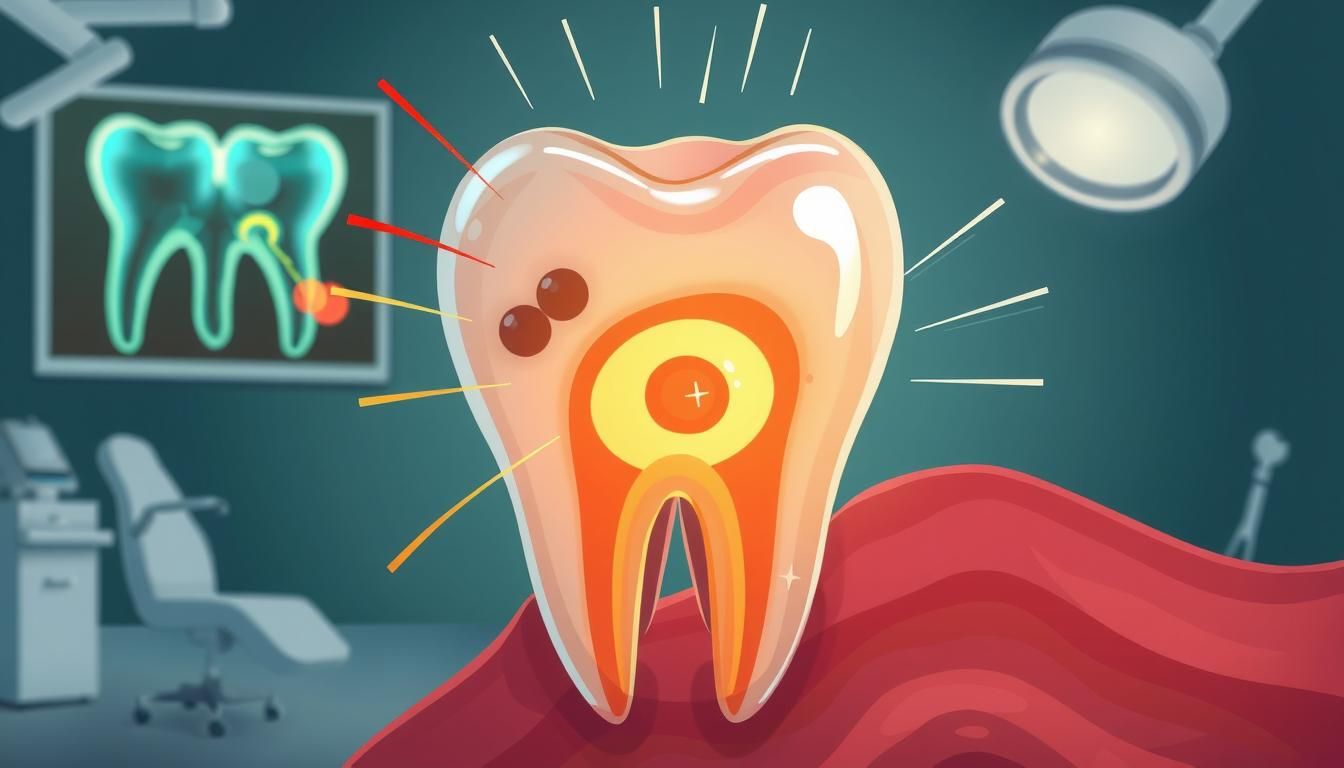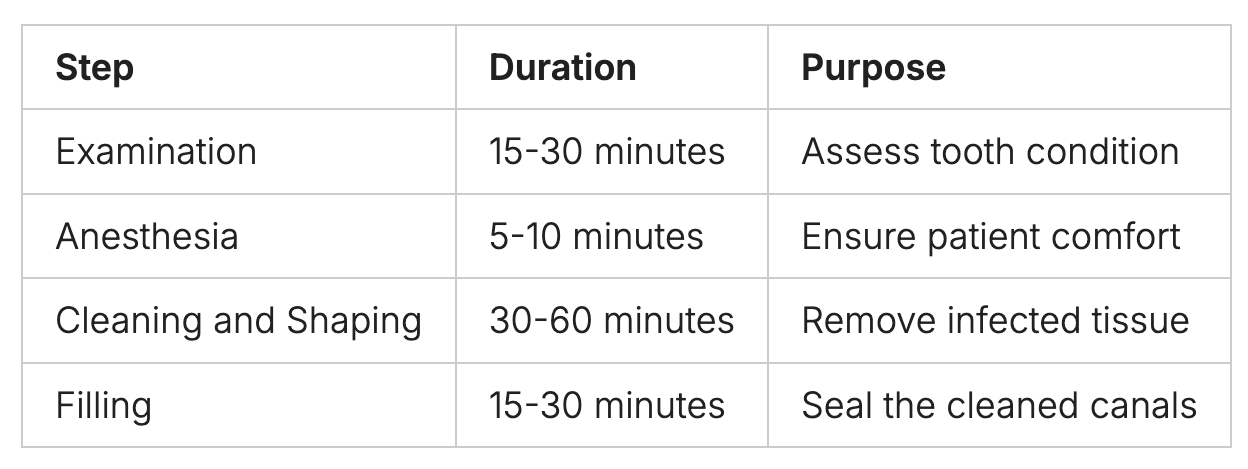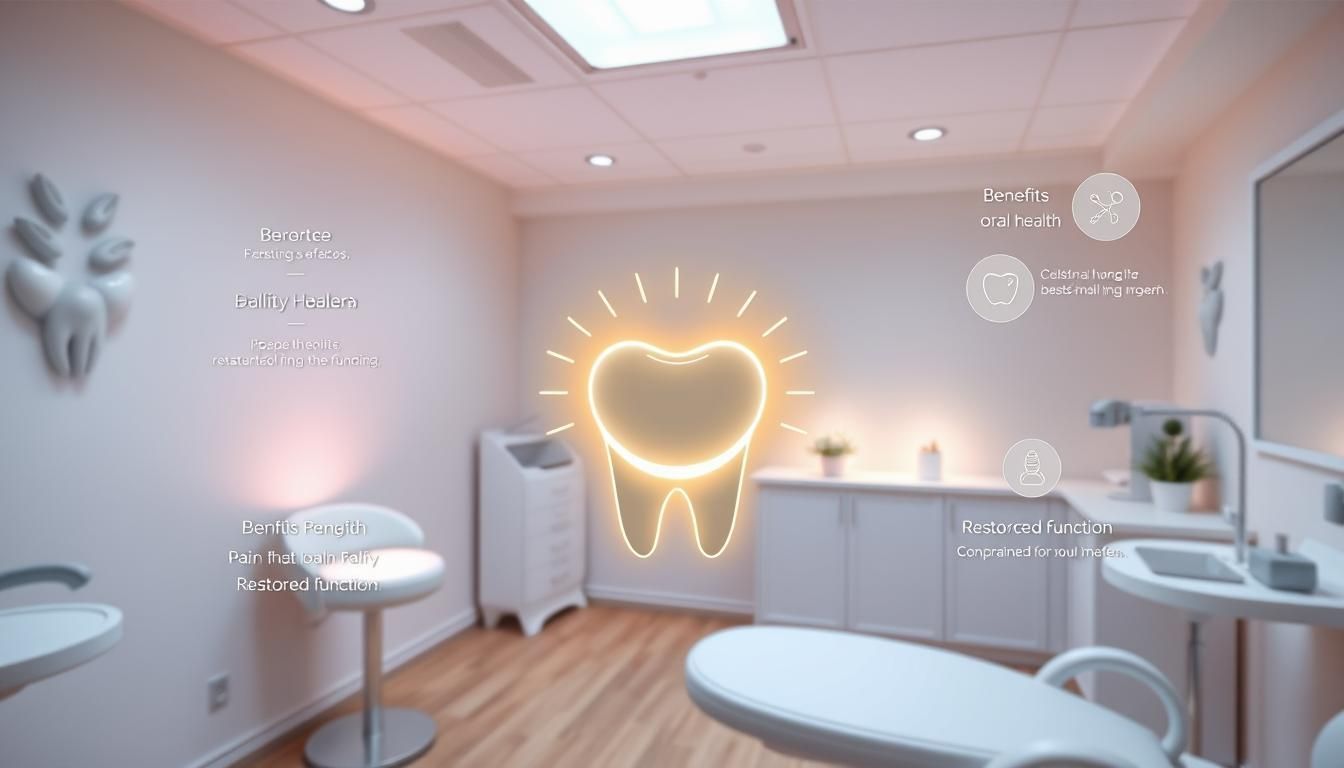New Paragraph
When Would I Need A Root Canal? 10 Signs You Need One
When Would I Need A Root Canal?
10 Signs You Need One

It's important to know the signs that show you might need a root canal. Spotting these symptoms early can help avoid bigger problems and keep your natural tooth. About 15 million root canals are done to treat severely infected teeth, often due to trauma or untreated cavities.
In this article, we'll look at the top 10 signs you might need a root canal. We'll also talk about the procedure and what to expect during and after. By the end, you'll know when to see a dentist for root canal needs.
Key Takeaways
- Root canals are common dental procedures to treat severe tooth decay or infection
- Early recognition of symptoms can prevent complications and save natural teeth
- Persistent tooth pain is a primary indicator of a root canal need
- Sensitivity to hot and cold may signal underlying dental issues
- Swollen or tender gums can be a sign of infection needing a root canal
- Prompt dental evaluation is key if you notice any warning signs
- Root canals can alleviate pain and preserve oral health
Overview
Root canal treatment, also known as endodontic treatment, is a dental procedure. It aims to save a severely damaged or infected tooth. The process involves removing the infected pulp, cleaning the root canals, and sealing them to prevent future infections.
Tooth infections often come from deep decay, repeated dental procedures, or trauma. If left untreated, these infections can cause severe pain, abscesses, and even tooth loss. Root canal therapy aims to eliminate the infection and keep the natural tooth structure.
- Numbing the area with local anesthesia
- Creating an opening in the tooth to access the pulp chamber
- Removing the infected pulp and cleaning the root canals
- Shaping the canals for filling
- Sealing the canals with a rubber-like material
- Placing a temporary filling to protect the tooth
Modern root canal treatments are relatively painless and highly effective. They save teeth that would need extraction. By undergoing this procedure, patients can keep their natural smile and avoid more extensive dental work in the future.
What Is a Root Canal?
A root canal is a dental procedure that saves a severely damaged or infected tooth. It involves pulp removal from the tooth's interior, cleaning, and sealing to prevent further infection. This treatment is key for keeping your teeth healthy and intact.
The Three Major Components of a Root Canal
A root canal treatment has three main parts:
- Addressing the tooth pulp
- Treating the root canals
- Placing a dental crown
Tooth Pulp
Tooth pulp is the soft tissue inside your tooth. It has nerves, blood vessels, and connective tissue. If it gets infected or inflamed, removing the pulp is needed to save the tooth and stop the pain.
Root Canals
Root canals are tiny passageways from the tooth's pulp chamber to the root tip. During treatment, these canals are cleaned, shaped, and filled with a biocompatible material to stop reinfection.
Dental Crown
After the root canal, a dental crown is placed over the treated tooth. This crown protects the weakened tooth, restoring its function and look.

In some cases, an apicoectomy might be needed if the root canal treatment fails to heal the infection completely. This surgical procedure removes the tip of the tooth's root to eliminate persistent infection.
Why Would I Need a Root Canal?
Root canal therapy is a dental procedure that saves severely damaged teeth. It's important to know when you might need it.
Causes of Root Canal Necessity
Several factors can lead to the need for a root canal:
- Deep tooth decay
- Repeated dental procedures on the same tooth
- Cracked or chipped tooth
- Trauma to the tooth
- Dental abscess formation
When bacteria enter the tooth's inner pulp, it can cause infection. This often results in pain and may lead to a dental abscess if left untreated.
How Do You Know If You Need a Root Canal?
Recognizing the signs that indicate the need for root canal therapy is key. Some common symptoms include:
- Severe toothache when chewing or applying pressure
- Prolonged sensitivity to hot or cold temperatures
- Discoloration of the tooth
- Swelling and tenderness in nearby gums
- Persistent or recurring pimple on the gums
If you experience these symptoms, it's essential to consult a dentist promptly. Early intervention can prevent the spread of infection and potentially save your tooth through root canal therapy.
10 Signs You Need a Root Canal
Knowing when you need a root canal is key to keeping your teeth healthy. Here are ten signs that might mean you need this dental surgery:
Persistent Tooth Pain
Constant tooth pain is a big sign you might need a root canal. This pain can be mild or very strong and last for days or weeks.
Sensitivity to Hot and Cold
Sharp pain from hot or cold foods and drinks could mean nerve damage. This might need a root canal treatment.
Swollen or Tender Gums
Swollen or tender gums around a tooth often mean an infection. This could need a root canal procedure.
Pimple-Like Bumps on Gums
Small bumps on your gums near a painful tooth might be an infection. This could need endodontic care.

- Tooth discoloration
- Prolonged sensitivity to pressure
- Tooth mobility
- Cracked or chipped tooth
- Deep decay
- History of repeated dental procedures on the same tooth

Procedure Details
A root canal is a common dental treatment to save a severely damaged or infected tooth. It involves several steps to remove the infected pulp and restore the tooth's function.
What Happens During Root Canal Treatment?
A dentist or endodontist cleans and shapes the inside of the tooth during a root canal. They remove the damaged pulp, disinfect the area, and seal it to prevent future infections. The process usually takes one to three visits, depending on the case's complexity.
Steps of a Root Canal Procedure
The root canal procedure includes several key steps:
- Examination and X-rays
- Local anesthesia administration
- Dental dam placement
- Access hole creation
- Pulp removal and canal cleaning
- Canal shaping
- Canal filling
- Temporary filling placement
New Paragraph

After the treatment, your dentist may suggest a crown to protect the tooth. This helps restore its full function. With proper care, a tooth that has undergone a root canal can last a lifetime.
Risks and Benefits
Root canal treatment has both good and bad sides. Knowing these can help you decide what's best for your teeth.
Potential Benefits of Root Canals
Root canals can change lives for those with bad tooth infections or abscesses. They often save teeth that would have to be pulled. This treatment can stop pain and prevent infection from spreading.

Risks or Complications of Root Canals
Root canals are usually safe, but there are risks. Reinfection or tooth fracture can happen in rare cases. Sometimes, the tooth infection might not fully go away, causing ongoing pain.
In these cases, more treatments like apicoectomy might be needed.
Talking to your dentist about these risks and benefits is key. They can give advice based on your dental situation. This helps you choose the best option for your teeth.
Recovery and Outlook
After getting a root canal, you might wonder about the recovery. Knowing what to expect can make things easier and help you heal faster.
Recovery Timeline
Most people feel better within a few days after a root canal. The first 24-48 hours are important. You might feel some pain as the anesthesia wears off, but it usually goes away quickly. It can take about a week to fully heal.
Self-Care After Root Canal
Good self-care is important for a smooth recovery. Don't chew on the treated tooth until it's covered with a crown. Brush and floss gently to keep it clean. Take any medicine as your dentist tells you to. If you have severe pain or swelling, call your dentist right away.
Post-Procedure Expectations
You might feel some mild discomfort and sensitivity after root canal treatment. Your bite might feel a bit off because of the surgery. These feelings usually go away in a few days. If they don't, talk to your dentist.
Keep in mind, everyone heals differently. Always follow your dentist's advice for the best results. With the right care, your treated tooth can last a long time, keeping your smile healthy for years.
Frequently Asked Questions (FAQs)
Root canals are a common dental procedure, but many people have questions about them. Let's address some of the most frequently asked questions about root canals and endodontic treatment.
What are the signs you need a root canal?
Signs you might need a root canal include severe tooth pain and sensitivity to hot and cold. You might also notice swollen gums or a pimple-like bump on your gums. If you see these symptoms, it's important to see a dentist right away.
What kind of pain needs a root canal?
Tooth pain that may need a root canal is often intense and lasts a long time. It can feel sharp or like a dull ache. The pain might get worse when you bite down or press on the tooth.
At what stage root canal is needed?
A root canal is needed when the tooth's pulp is infected or damaged. This can happen due to deep decay, repeated dental procedures, or injury. Catching the problem early is key to saving the natural tooth.
Is there a way to avoid a root canal?
While you can't always avoid a root canal, there are steps to reduce the risk. Good oral hygiene, avoiding sugary foods, and regular dentist visits help. Treating cavities and dental issues early can often prevent the need for a root canal.
Conclusion
Knowing when you might need a root canal is key to good oral health. This procedure helps keep your natural teeth and eases pain from infection or decay. Signs like constant tooth pain, sensitivity to hot or cold, and swollen gums mean it's time to see a dentist.
Though a root canal might seem scary, it's a common and effective treatment. Dentists do this procedure often, saving millions of teeth each year. Getting a root canal can prevent the need for tooth extraction and more complicated dental work later.
If you're showing signs of needing a root canal, don't wait to see a dentist. Early treatment can greatly improve your oral health. In Washington, DC, DC Implant & Cosmetic Dentistry offers top-notch root canal treatments. You can find them at 4444 Connecticut Ave NW, #106 Washington, DC 20008, or call (202) 363-2810. Their website, https://www.dc-dentistry.com/oral-surgery, has more on their services.
Your oral health is linked to your overall well-being. By being proactive and getting care when needed, you can keep a healthy, pain-free smile for years.
DC Implant & Cosmetic Dentistry
4444 Connecticut Ave NW, #106
(202) 363-2810



